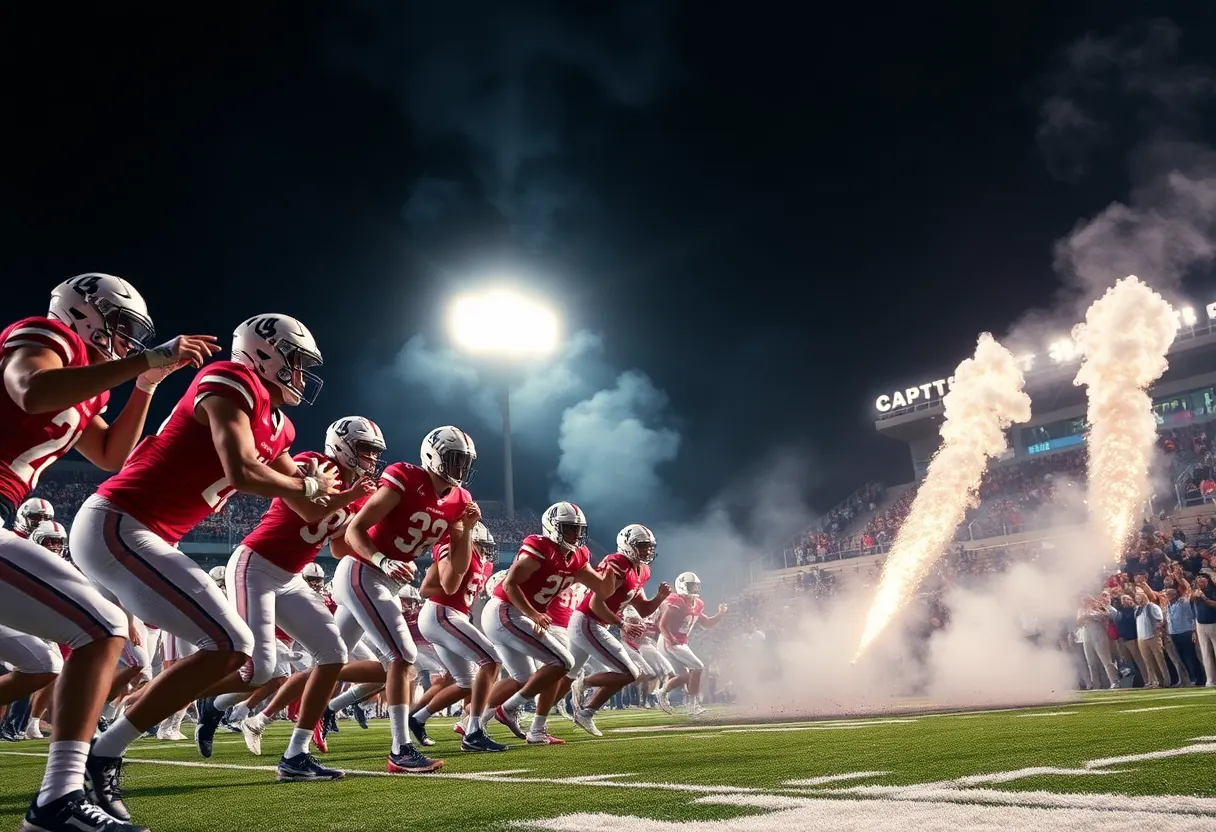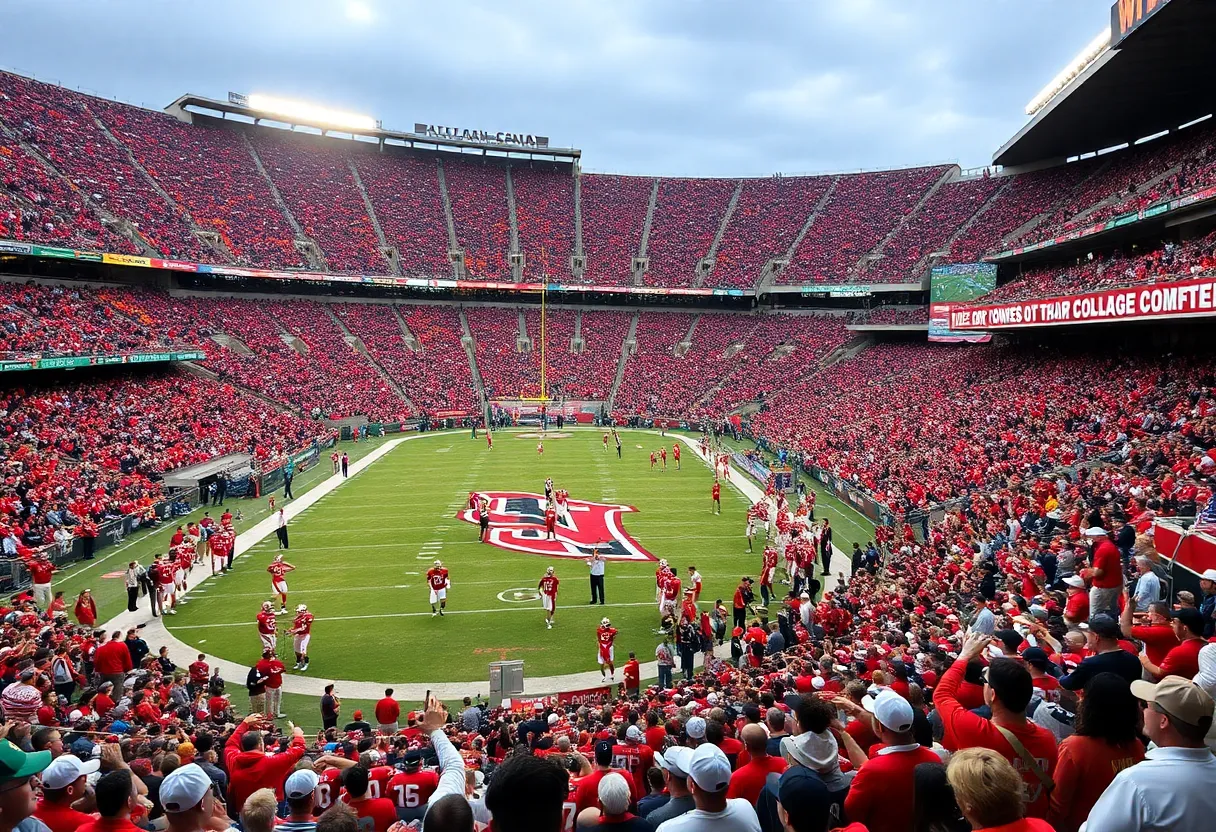Oklahoma City, October 11, 2025
In a surprising twist in college football recruiting, Kaydin Jones, a former commit to the Oklahoma State Cowboys, has switched his allegiance to the University of Kansas Jayhawks. This decision highlights the shifting dynamics of athlete commitments and the ongoing competition for top recruits in the Big 12 Conference. As Oklahoma State seeks to adjust their recruiting strategy, Kansas celebrates a notable addition to their roster, enhancing their prospects for future seasons.
Stillwater, OK – Recruiting Shakeup: Former OSU Commit Kaydin Jones Chooses Kansas
In a shocking turn of events in college football recruiting, former Oklahoma State Cowboys 2026 commit Kaydin Jones has decommitted and signed with the University of Kansas Jayhawks. This unexpected shift occurred in Oklahoma City, OK, highlighting the fluid nature of high school athlete commitments at the Division I level.
The move leaves the OSU coaching staff actively working to strengthen their recruiting class for the upcoming cycle. Meanwhile, the Kansas program views this as a significant victory, bolstering their roster with a promising talent. Jones, a standout high school athlete, explained his decision by pointing to a stronger alignment with the opportunities available at Kansas.
Recruiting dynamics in college athletics often see rapid changes, influenced by factors such as program fit, coaching interactions, and long-term development prospects. This instance underscores how commitments can evolve quickly, even after initial pledges, affecting team strategies and fan expectations alike.
Impact on Oklahoma State Cowboys
The loss of Kaydin Jones represents a setback for OSU’s 2026 recruiting efforts. The Cowboys had counted on Jones as a key piece in their future lineup, valued for his athletic prowess and potential contributions across multiple positions. Now, the coaching team must intensify outreach to other prospects to fill this gap and maintain competitive balance within their class.
Oklahoma State’s program has a storied history in college football, regularly competing in the Big 12 Conference. Such recruiting adjustments are not uncommon but require swift adaptation to sustain momentum. The staff’s response will be crucial in the coming weeks as the early signing period approaches, determining the overall strength of their incoming talent pool.
Gains for University of Kansas Jayhawks
For Kansas, securing Jones marks a coup in the competitive recruiting landscape. The Jayhawks, aiming to elevate their standing in the Big 12, see this addition as a step toward building a more robust team. Jones’s skills align well with Kansas’s offensive and defensive schemes, potentially accelerating the program’s growth under current leadership.
The decision reflects Kansas’s increasing appeal to top recruits, driven by recent investments in facilities, coaching stability, and a vision for sustained success. This commitment adds to a growing list of high-profile additions, signaling positive trajectory for the Jayhawks as they prepare for future seasons.
Broader Context of College Recruiting Volatility
College football recruiting remains a high-stakes environment where verbal commitments can shift due to various influences, including visits to other campuses, changes in coaching staffs, or evolving team needs. This volatility affects not only the programs involved but also the athletes navigating these choices early in their careers.
In the Big 12 Conference, where both OSU and Kansas compete, recruiting battles intensify each cycle. Schools invest heavily in scouting, relationship-building, and offering scholarships to attract elite talent. Jones’s move exemplifies how one decision can ripple across rival programs, prompting reevaluations and new pursuits.
High school athletes like Jones often weigh multiple factors, from academic support to playing time opportunities, when finalizing their choices. National Signing Day events formalize these commitments, but decommitments prior to signing highlight the preliminary nature of early pledges. For fans and analysts, tracking these developments provides insight into a team’s future competitiveness.
Recent trends show increased transfer portal activity alongside traditional recruiting, adding layers to roster construction. Programs must balance immediate needs with long-term planning, making adaptability essential. Jones’s transition from OSU to Kansas illustrates these challenges, as both schools adjust their strategies accordingly.
Looking ahead, the 2026 class will shape the landscape for the 2027 and beyond seasons. OSU’s efforts to rebound and Kansas’s momentum could influence conference dynamics, with each program vying for top talent in a crowded field. This event serves as a reminder of the unpredictable yet exciting world of college athletics recruiting.
FAQ
What happened with Kaydin Jones’s commitment?
In a shocking turn, former Oklahoma State Cowboys 2026 commit Kaydin Jones has decommitted and signed with the University of Kansas Jayhawks.
Why did Kaydin Jones choose to switch schools?
The star recruit cited a better fit in Lawrence as the reason.
How is this affecting the Oklahoma State Cowboys?
OSU coaches are scrambling to bolster their class.
What does this mean for the University of Kansas Jayhawks?
KU celebrates the coup.
What does this event suggest about college recruiting?
This shift highlights the volatile world of college recruiting.
Key Features of the Recruiting Shift
| Aspect | Details |
|---|---|
| Recruit Involved | Kaydin Jones |
| Original Commitment | Oklahoma State Cowboys 2026 class |
| New Commitment | University of Kansas Jayhawks |
| Reason for Change | Better fit in Lawrence |
| Impact on OSU | Coaches scrambling to bolster class |
| Impact on KU | Celebrating the coup |
| Broader Implication | Highlights volatile world of college recruiting |




